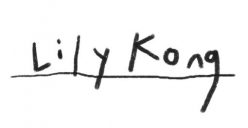Reflections
What is your position relative to discipline of graphic communication design. What aspect of graphic design does it interrogate?
In 100 Screen grabs, I created work with a relatively free flow where I did not set myself any particular boundaries. Instead I intentionally take one or a few elements from one work to developing it in the following one. This led to a discovery of a comic-window format that I applied to more than half of the iterations.
The economy of form has been applied and the message was highlighted with the use of space, text, title, comic panels and a non-human but personified protagonist. I use design/image making as a way to inquire and explore the composition of images, the relationships of image components.
I incidentally used design/image making to subliming certain concepts, ie. the isolation and loneliness within human, library and society in 100 Screen grabs. I take design as a way to redirect and refine information. I would like to create work with a extent of “relaxed irreverence.”
Does it confront or exploit a principle of form, meaning, distribution or circulation?
My 100 screengrabs tried to exploit the economy of form. The use of space, dialogue, static titles, non-human but personified character and comic panels since iterations 36, explores the limit/potential of form.
The meaning of work changes throughout the 100 iterations. That is because there was no intention in keeping the content consistent. The messages of work varied, some says nothing, some are about love, some about isolation.
The meaning of work may varied among different viewers. It depends on how intensively and extensively they have taken visual training, ie. in reading symbols, colours, light etc. I have come to realise that measuring and refining the image’s power and the way it works can be problematic and very complicated., according to Mitchell (2015).
I want to shift from power to desire, hence explore on the desire of images as Mitchell (2015)suggested, the image born and personified would become an existing separated from the creator’s intention. It has a “life” of its own.
In iteration 52, the inwardness of the character in the top window , the invisibleness of the brick wall blending in the many brickwalls and the absence of expressions make it seem beyond desire, in comparison to the obvious facial expressions when a dialogue is made in classic editorial illustrations and classic figurative paintings. But the verbal text “I am so lonely.”in the bottom window sends a totally contrary message. If we read this text as words spoken by the character, the brickwall, the whole look of the brick wall changes, as if the brick wall is a living person who suffered from loneliness. The image sends incompatible messages about its desire : it doesn’t want to be seen, it wants to be seen, it wants to be heard.

This analysis only briefly identify what iteration 52 wants. According to Mitchell (2015), “…The question of what pictures want certainly does not eliminate the interpretation of signs. All it accomplishes is a subtle dislocation of the target of interpretation, a slight modification in the picture we have of picutre (and perhaps signs.) themselves.”. Like people, pictures have to helped to recollect it through a dialogue with others, through analysis.
Hopefully through analysing images, as the brief below suggested, will help in building a better understanding on how images work, what do image want and what do they lack.
————————————————————————————————————
Brief
This brief is intended to explore what pictures want without overriding the maker’s desire or the beholder’s (viewer) interpretation.
How can we identify the desire of an image? How will it help us build new images that better communicate/signify the maker’s desire?
First, I will select a few images from 100 Screengrabs and apply the question “What do images want?” With reference to W.J.T. Mitchell (2005), he suggests a few questions to turn analysis of pictures toward questions of progress, effect, and to put in question the spectator position:
“What does the picture want from one or from “us” or “them” or whoever?
Who or what is the target of the demand/desire/need expressed by the picture?
What does the picture lack?
What does it leave out?
What is its area of erasure?
Its blind spot?
Its anamorphic blur?
What does the frame or boundary exclude?
What does its angle of representation prevent us from seeing, and prevent it from showing?
What does it need or demand from the beholder to complete its work?”
These offerings serve as a starting point to better understand an image and the “intuitive” process of image making.
In the meantime, I will study the work of Barbara Kruger. I am aware that the context of her work and my 100 Screengrabs are different. But the economy of form – in other words, use of text and dialogue, synchronised.
In terms of pushing it forward by making, I will select one iteration and re-iterate it with the same context/message. Next, combined with the readings and questionings above, make an analyse with these iterations.
————————————————————————————————————
Reference
W.J.T. Mitchell (2005) ‘What Do Pictures want?’ in What Do Pictures Want: The Lives and Loves of Images. Chicago: University of Chicago Press, pp.28–56.
Barbara Kruger (1981), Untitled (Your gaze hits the side of my face.). Available at: https://medium.com/artbloc/your-gaze-hits-the-side-of-my-face-b3d244aade77
Marshall McLuhan & Quentin Fiore ([1967] 2001) The Medium is the Massage: An Inventory of Effects. Berkeley: Gingko Press.
Susan Sontag ([1965] 2009) ‘On Style’ in Against Interpretation and Other Essays. London: Penguin, pp.15–36.
